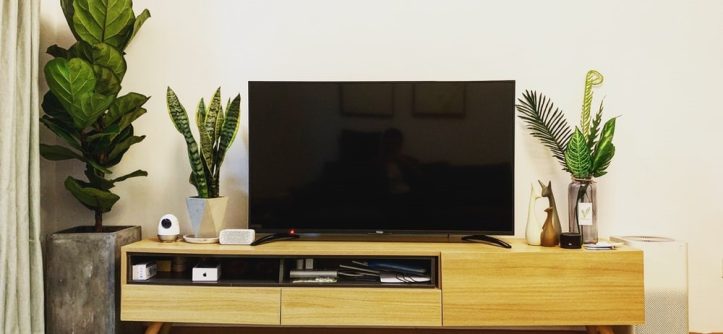When it comes to buying TVs, there are a million and one options for you to choose from, and it can get incredibly overwhelming to pick the right one. There are many things to consider, including size, brand, resolution, sound quality, connectivity, and more.
Today, we will discuss just one of these things, which we think is the most basic and essential choice to make – TV resolution.
Which TV Resolution Is Best for You?
Let’s go through the most common TV resolutions in ascending order.
720p (HD) Resolution
A TV with 720p resolution is the lowest “HD” resolution available in the markets. It is a reasonably decent resolution standard with a little under a million pixels, but it does not meet the recommended resolution for our modern standards.
This is simply because most modern content is designed for and made in 1080p resolution. Still, 720p has its benefits, mainly the fact that 720p TVs are inexpensive. However, the lower pixel density means that 720p is not suitable for larger displays.
Reasons to buy a 720p TV:
- Inexpensive, although not too far from some 1080p TV prices
- Decent sharpness and picture quality for smaller TVs under 30-inches
1080p (FHD) Resolution
1080p resolution is known as Full HD or FHD, and this is currently the industry standard worldwide. Most television, movie, and online content is produced at 1080p resolution or at least designed to support it.
A 1080p TV is the perfect balance of resolution and pricing for most displays. It looks very sharp on smaller TVs and also looks fairly sharp on larger displays nearing 50-inches. Naturally, sharpness depends on the Pixels-Per-Inch (PPI), which varies depending on the size of the display.
Any 1080p TV, whether 24-inch or 42-inch, will have a little over 2 million pixels. So, if you compare a 32-inch 720p TV with a 32-inch 1080p TV, the PPI is more than doubled on the 1080p resolution, giving you twice the sharpness of the 720p variant.
Because 1080p resolution meets most industry standards, it is easily recommendable for the majority of TV consumers. They offer excellent quality and sharpness, as long as the display size remains under 50-inches.
Anything around or over 50-inches loses sharpness and quality at 1080p due to the larger display size. However, the price difference between similar models of 720p and 1080p TVs is not much, making the latter well worth the extra bucks.
Reasons to buy a 1080p TV:
- Great value for money
- Meets the industry standard for most broadcasted and online content
- Excellent sharpness and picture quality on displays under 50-inches
- Best performance-to-graphics ratio for gaming, especially at higher frame-rates
4K (UHD) Resolution
4K resolution is commonly known as Ultra HD or UHD, a massive leap from previous resolutions. It is sometimes referred to as 2160p resolution, which is its technical resolution specification. This resolution has over 8 million pixels, making it excellent for larger displays.
The display sharpness is unlike anything else, and there is a very noticeable difference between a 1080p display and a 4K display. Its high PPI is the reason why almost all TVs that are 50-inches or larger support 4K resolutions. While most industries are moving towards 4K (UHD) resolution, we are not quite there yet, even though there is plenty of content to consume at this resolution.
Reasons to buy a 4K TV:
- Ideal for consuming 4K content
- Incredible sharpness and picture quality, even on larger displays above 50-inches
- Provides a cinematic experience like no other
- Some 4K resolution TVs come with additional high-tech options but are relatively expensive
Conclusion
Hopefully, you now have a better understanding of which TV resolution is best for you. Once you understand the TV resolution that suits your needs, you will have a much easier time choosing the right one to buy.
Of course, to make things easier, you should always compare products, specifications, and prices at reliable online markets like Gimmie gimmie.com.au/product-category/tvs/ for a smoother TV buying experience.
Tags: 1080p, 4K, 720p, FHD, HD, pixels, PPI, sharpness, TV resolution, TVs, UHD, which TV resolution is best for you


